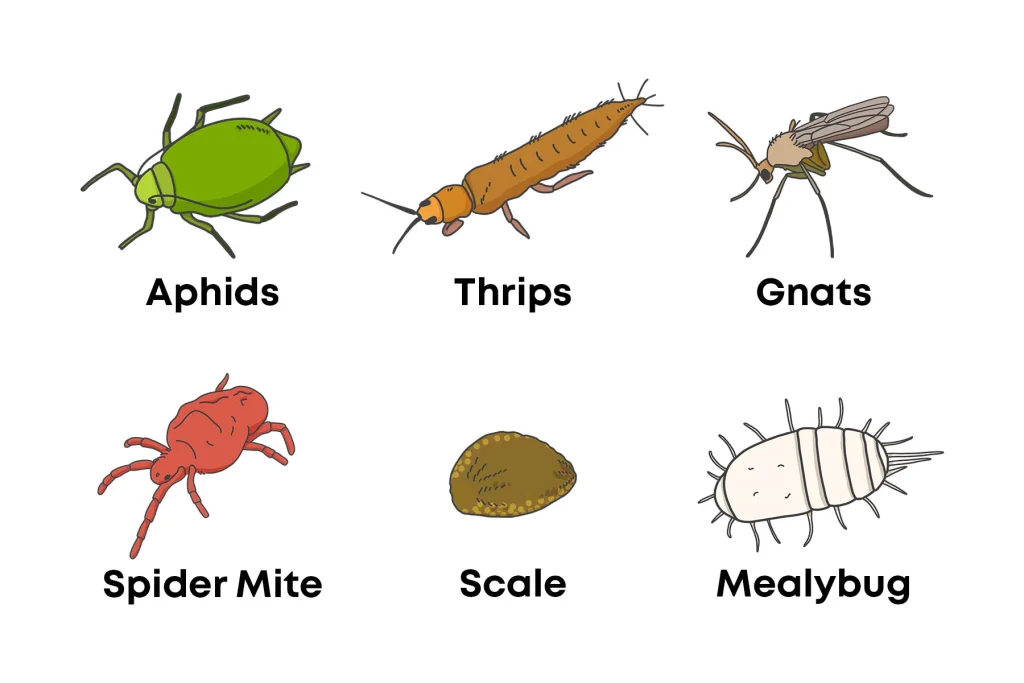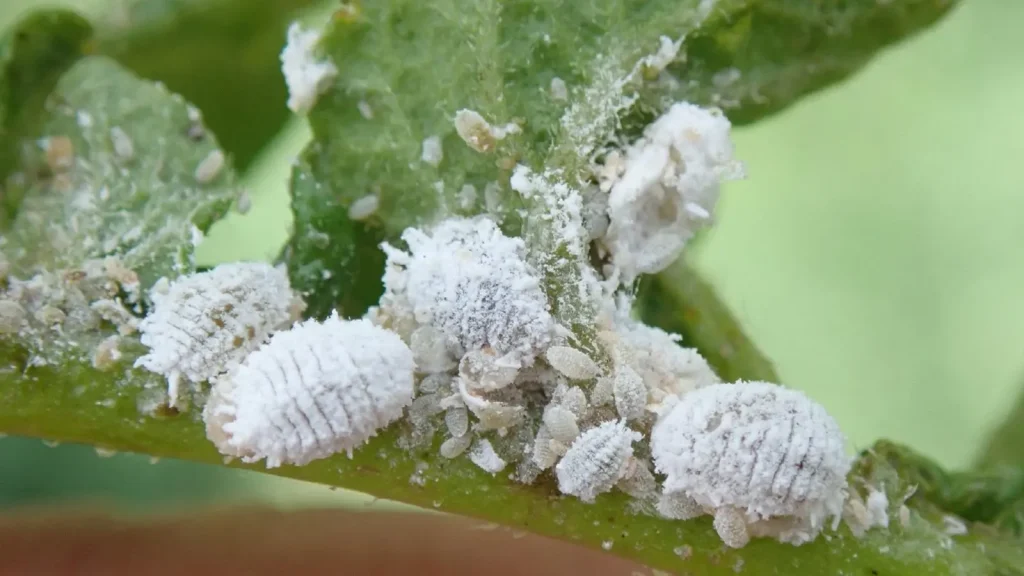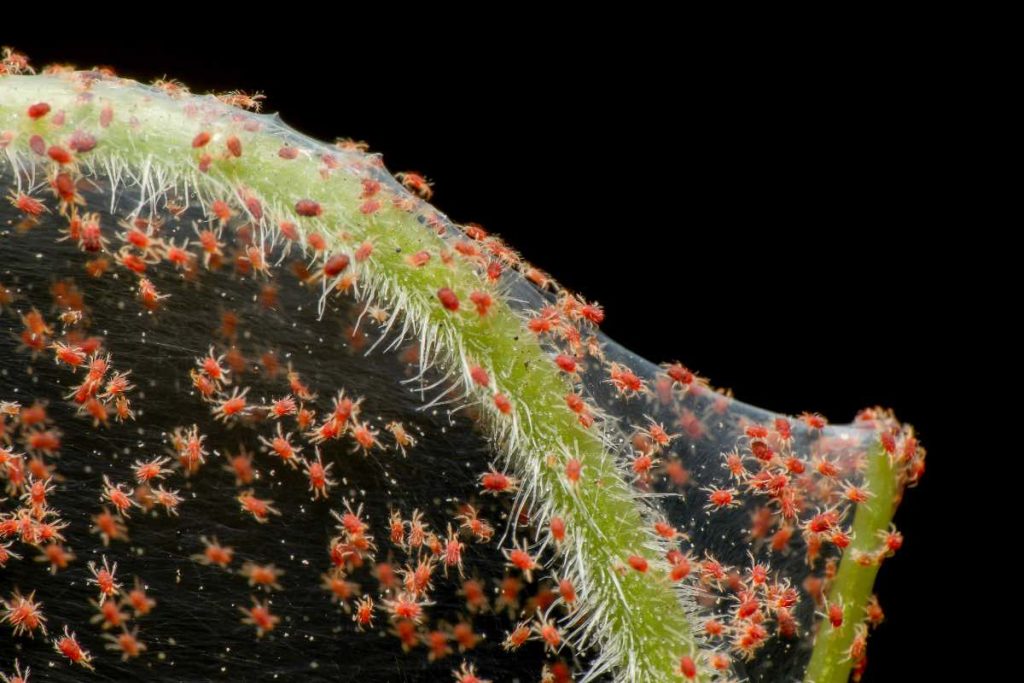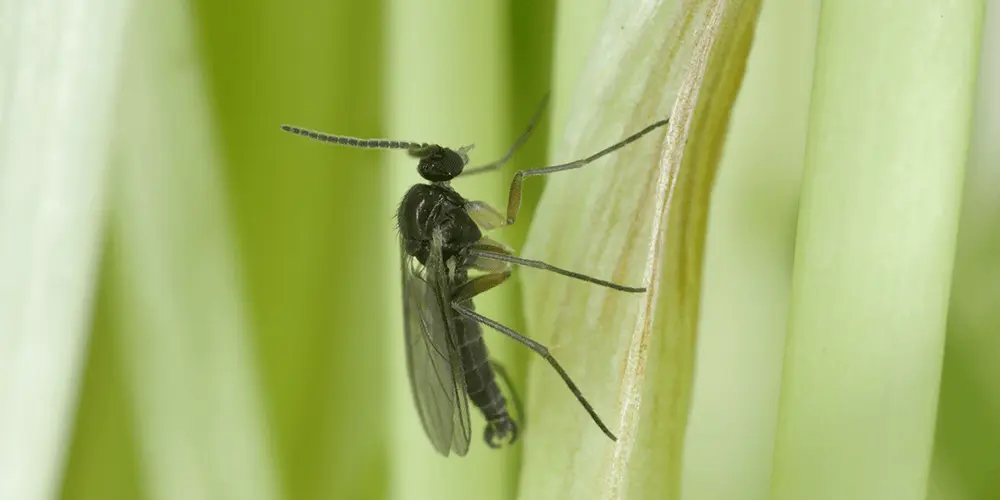Imagine your indoor garden, you may find it very healthy and happy. This makes you happy too. You know that this is all because of your proper supervision and care. However, this does not imply that pests cannot infect it. Yes, it is possible that your favourite houseplant may get infected from time to time by insects or mites, and this may be fatal for the plants. A few bugs won’t do much harm, but if left untreated, they can multiply and turn your favourite potted plant into an ugly mess, or even kill it. Don’t worry, there is an easy solution for this. Most common houseplant pests can be controlled with some easy techniques. The only thing you need is your patience. We are going to share information regarding how to spot and control common houseplant pests.

How To Spot Houseplant Pests
Before moving further, you should ask yourself one question How much do you love your plants? Because the process depends on your answer. There are no quick fixes, and it takes time and patience for pest control. So let’s begin. Here are some ways to spot common pests and their safe eradication for your dear ones.
Pest 1 – Scales
Scales are soft-bodied insects that suck plant sap. They can be found on the underside of leaves and on stems. They can also occasionally appear on the upper leaf surface. In their immature stage, they move a little as they feed, and gradually later, they become adults and stay put. The adults cover themselves in a waxy, protective coating. Scale pests can infect almost all common houseplants, but they are particularly fond of Citrus trees, Ivy and Fig. Let’s see how to spot Sacles from your houseplants?

How to Spot Scale Pest
Scale-infested plant leaves may turn yellow and they drop off and gradually their stem die. Another way is by looking for sticky substances on your plant. This sticky substance called “Honeydew” is produced by scales and it leaves the substance on your plant. As an adult, scales will look like a small white or brown bump.
How to Control the Houseplant Pests: Scale
a. Spraying insecticidal soap or neem oil.
b. Scrap the adult scales off the plants using your fingernails.
c. If your plant is heavily infested with scales, remove that part from the plant body.
Pest 2 – Mealy Bugs
Mealybugs are soft-bodied, wingless insects that often appear as white, cottony masses on the leaves, stems and fruit of plants. They feed by inserting long sucking mouthparts, called stylets, into plants and drawing sap out of the tissue. Like Scales, Mealy bugs are sap suckers. During their initial presence, the infestation may not be that evident. Mealy bugs also produce a sticky substance called honeydew which makes the plant sticky and encourages the growth of sooty moulds. Coleus, Hoya, Jade, Gardenia, and Poinsettia are particularly susceptible to mealybugs.

How to Spot Mealy Bugs
You can spot the mealy bug infestation by looking into the plants for a waxy deposit. The adult mealy bugs (1/10 — 1/4 inch long) are soft, oval, distinctly segmented insects that are usually covered with a white or grey mealy wax. Small nymphs, called crawlers, are light yellow and free of wax. If your plant is infected, the leaves become yellow and gradually they die down.
How to Control the Houseplant Pests: Mealy Bugs
a. For heavy infestation, you can use insecticidal soap and neem oil
b. Usage of rubbing alcohol
Dip a cotton swab in rubbing alcohol and rub it on the infected part.
c. Washing with water
Wash the leaves off with a strong spray of water, and this will help you to get rid of mealy bugs.
d. Washing the plant foliage regularly with a leaf shine will help discourage future infestations.
Pest 3 – Spider Mites
Spider mites are not insects but are more closely related to spiders. These arachnids have four pairs of legs, no antennae, and a single, oval body region. Most spider mites have the ability to produce fine silk webbing. Spider mites are very tiny, being less than 1/50 inch (0.4 mm) long when adults. Interestingly, spider mites are not true insects, but are classified as a type of arachnid, making them relatives of spiders, ticks, and scorpions. Spider mite adults are reddish brown or pale in colour and oval-shaped. Spider mites live in colonies, mostly on the underside of leaves, and feed by piercing leaf tissue and sucking up plant fluids.

How to Spot Spider Mites
If you find a presence of tiny white or yellow speckles, you can confirm the presence of spider mites. Another way is by spotting yellow foliage on your plant. Heavily infested plants may be discoloured, stunted, or even killed. Web-producing spider mites may coat the foliage with fine silk, which collects dust and looks dirty.
How to Control the Houseplant Pests: Spider Mites
a. Inspection and quarantine
You should inspect your houseplant daily for any infestations. If you find any, immediately quarantine them from the rest.
b. Prune your plants
Prune leaves, stems, and other infested parts of plants well past any webbing and discard them in the trash.
c. Spray with water
Wash the infested plant with a strong stream of water and this will help you to reduce the pest numbers.
d. Usage of insecticide soap and neem oil
e. Increasing humidity
Increasing humidity around plants may also help limit spider mite buildup.
Pest 4 – White Flies
White flies are tiny winged insects that have a delicate, powdery white appearance. These are very common houseplant pests and can be often found in thick crowds on the undersides of leaves. Even though they are called “flies,” whiteflies are not true flies. However, they do have wings and can fly. They are as small as 1/12 of an inch, and have a somewhat triangular shape. When infested plants are disturbed, great clouds of winged adults fly into the air. Both immatures and adults damage plants by sucking the juices from new growth, causing stunted growth and leaf yellowing.

How to Spot White Flies
a. Appearance
Adults (1/16 inch long) are moth-like insects with powdery white wings and short antennae. They can be found near the tops of plants or on stem ends. In their early stages, white flies are flattened, oval, and almost scale-like in appearance.
b. Signs of infestation
When plants are heavily fed by whiteflies, they quickly become extremely weakened and may be unable to perform photosynthesis. It will cause the leaves to wilt, turn a pale or yellow colour, stunt the plant’s growth, and eventually, the leaves may shrivel up and fall off the plant.
c. Presence of honeydew
Like scales and mealy bugs, white flies also secrete honeydew which makes the leaves sticky
How to Control the Houseplant Pests: White Flies
a. Insecticidal soap and neem oil
Apply this to the underside of the leaves where the white fly immatures are staying
b. Yellow sticky traps
Yellow sticky traps are helpful for monitoring and suppressing adult populations.
Pest 5 – Aphids
Aphids are small, soft-bodied insects that feed by sucking the nutrient-rich liquids out of plants. Like other pests, they also produce a sticky substance called honeydew. Aphids are particularly fond of tender, new growth, where they cause distortion and wilting. In large numbers, they can weaken plants significantly, harming flowers and fruit. Their life cycle is short (usually two to three weeks long) which results in a rapid increase in population and it is so important to get them under control before reproduction starts.

How to Spot Aphids
a. Appearance
Aphids are tiny (adults are under 1/4-inch), and often nearly invisible to the naked eye. Some may have a waxy or woolly coating, and they have pear-shaped bodies with long antennae. Most aphid species have two short tubes (called cornicles) projecting from their hind ends.
b. Presence of sticky substance called honeydew in the leaves
c. Presence of misshapen, curling, stunted, or yellowing leaves
How to Control the Houseplant Pests: Aphids
a. Spraying water
Try spraying infested plants with a strong stream of water. This helps to get rid of them.
b. Neem oil, insecticidal soaps, and horticultural oils
To be effective against aphids, these substances need to come into contact with the aphids.
c. Solution of water and dish soap
You can often control aphids by wiping or spraying the leaves of the plant with a mild solution of water and a few drops of dish soap. Soapy water should be reapplied every 2-3 days for 2 weeks.
Pest 6 – Fungus Gnats
Pest insects of the size of fruit flies, and fungus gnats mainly harm indoor houseplants. The moisture in potting soil attracts adult gnats, who lay their eggs on organic debris matter near the soil surface. Because they cannot bite people and cannot transmit diseases, humans are technically safe to be around fungus gnats, but the larvae can be a problem for indoor houseplants. The presence of high humidity and moisture inside our house leads to their presence in indoor plants. When the harmless adults are first noticed flying around house plants or gathered at a nearby window, they’re usually first noticed.

How to Spot Fungus Gnats
a. Appearance
Adults – Adult fungus gnats are delicate, greyish-black, mosquito-like flies (1/8 inch long) with long legs and one pair of clear wings. They are not strong fliers and emerge from potted plants, especially when watering. Also, they have segmented antennae that are longer than their head which makes them distinguishable.
Infants – The infants (1/4 inch) have a shiny black head and an elongated, whitish to transparent body. They are most abundant in damp, rich soils and feed on root hairs, fungi, and other organic materials.
b. Presence of wilting, loss of vigour, poor growth, and yellowing
How to Control the Houseplant Pests: Fungus Gnats
a. Inspect plants thoroughly prior to purchase for signs of insect pests. Turn up the soil carefully near the base of the plant and look for the glossy, clear larvae. Reject any plant sending up flying gnats.
b. Allow the surface of the soil in pots to dry between waterings.
c. If you suspect a fungus gnat infestation, an effective way to check for fungus gnat larvae is to place potato slices into the growing medium. Larvae will start to move to the potato slices and start feeding on them within a few days. Turn them over to look for larvae on the underside.
d. If pests are present, allow the soil to dry to a depth of one to two inches between waterings. This not only kills larvae and inhibits the development of eggs, but it also makes the soil less attractive to egg-laying females.
Our plants are like our own children. Any diseases affecting them have an impact in us too. This information will be very helpful for spotting and controlling pests in your houseplants and aiding their healthy growth. Happy gardening to all.